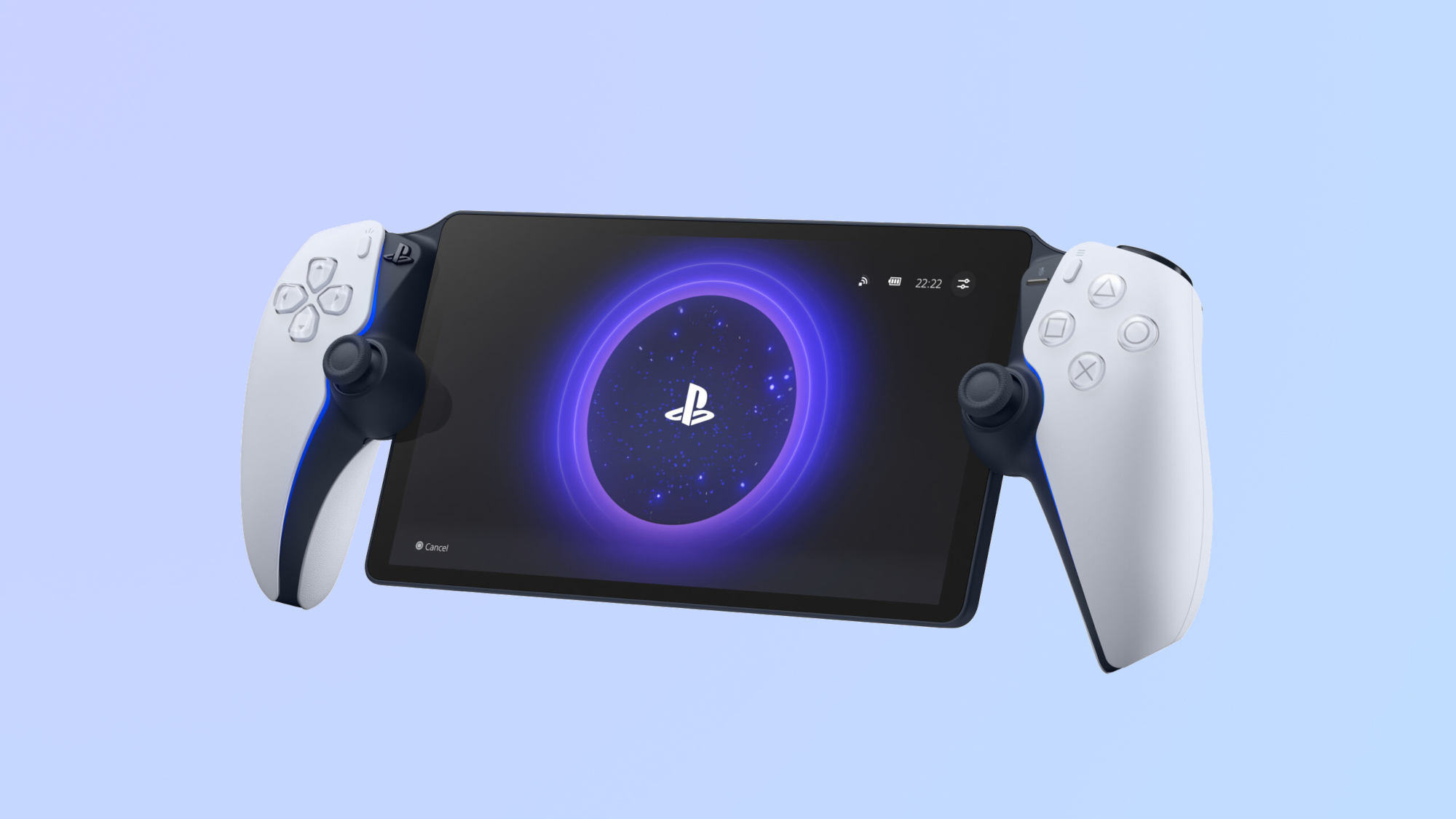
I’m a huge fan of the PlayStation Portal. I’ll admit I was initially skeptical of the $199 remote play device when it was first unveiled, but after going hands-on with the PS5 accessory, I’ve got mostly positive things to say about my experience with it to date.
Last week I was preparing to take a trip down to the Tom's Guide London offices — I’m based up in the (superior) North of England — and decided to bring the PlayStation Portal along with me to see how it would function as a travel gadget.
In summary, my experience was far from ideal. In fact, I had such a frustrating time trying to use the Portal beyond the four walls of my cramped apartment that I don’t think I’ll even take it with me on any future trips.
An important caveat
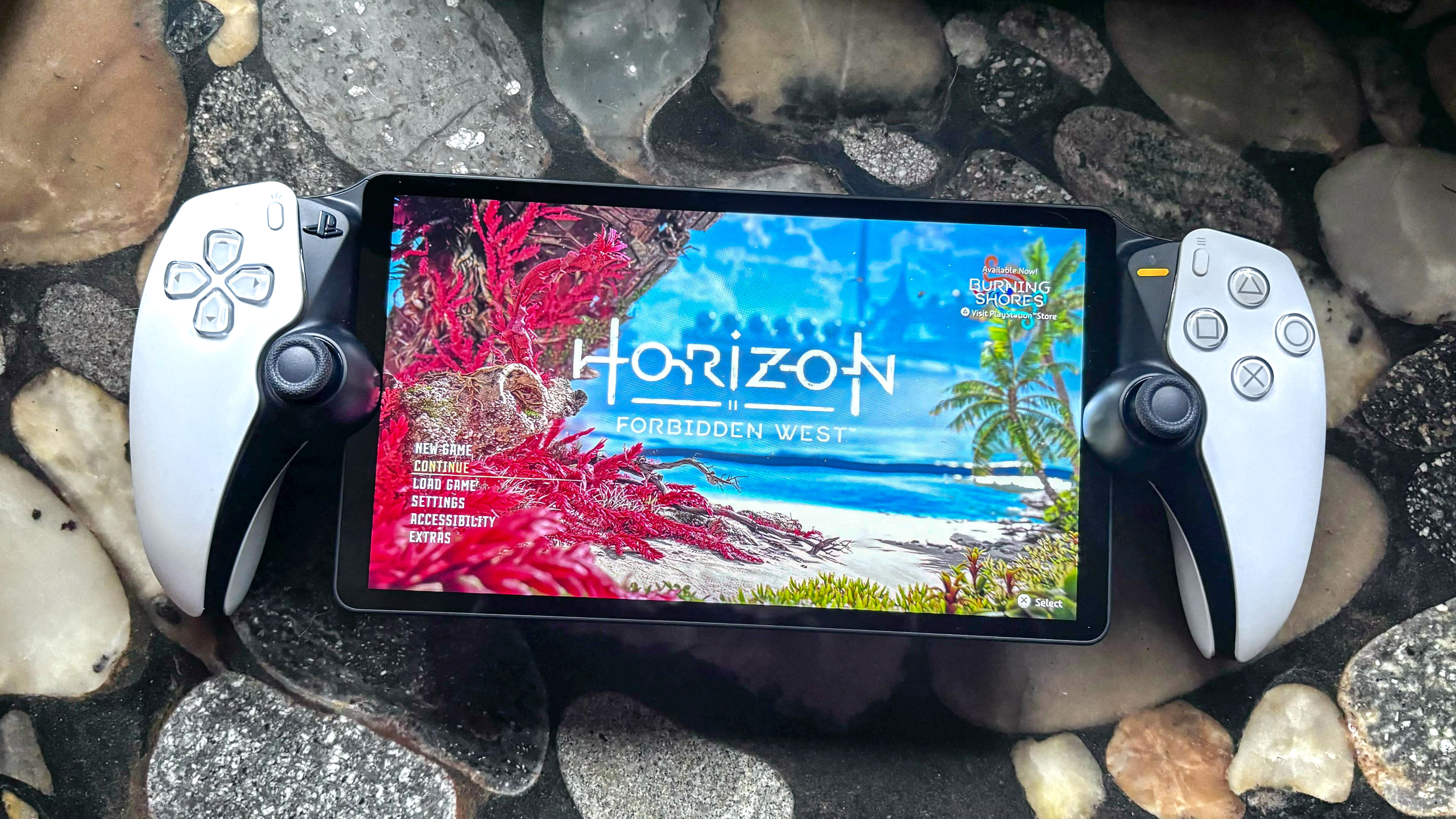
Before diving into my experience using the PlayStation Portal on a trip, I think it’s important to provide some context. The PlayStation Portal is a peripheral dedicated exclusively to remote play. Unlike the Nintendo Switch or Steam Deck, it is not capable of playing games natively. Instead, the Portal allows you to stream your PS5 console over Wi-Fi to its 8-inch LCD display, and that's all it can do.
It’s also important to note that Sony’s official marketing materials and product info don't pitch the Portal as a device suitable for traveling. In fact, the gadget's pre-order trailer and listing page on PlayStation Direct both make specific reference to the device giving “you access to the games on your PS5 console over home Wi-Fi.”
Sony is clearly not pitching the Portal as a gaming handheld suitable for planes, trains and automobiles ala the Switch or Deck. R.I.P. John Candy.
For this reason, I decided it wouldn't be fair to test the Portal in places where you couldn’t reasonably expect to have a strong internet connection. I left it unused during my train journey down, and I didn’t pull it out of my backpack while navigating the connection black hole that is the London Underground, either.
The testing described below was out of personal curiosity, not to cast judgment on Sony's surprisingly popular PS5 companion piece.
Testing the Portal in new places
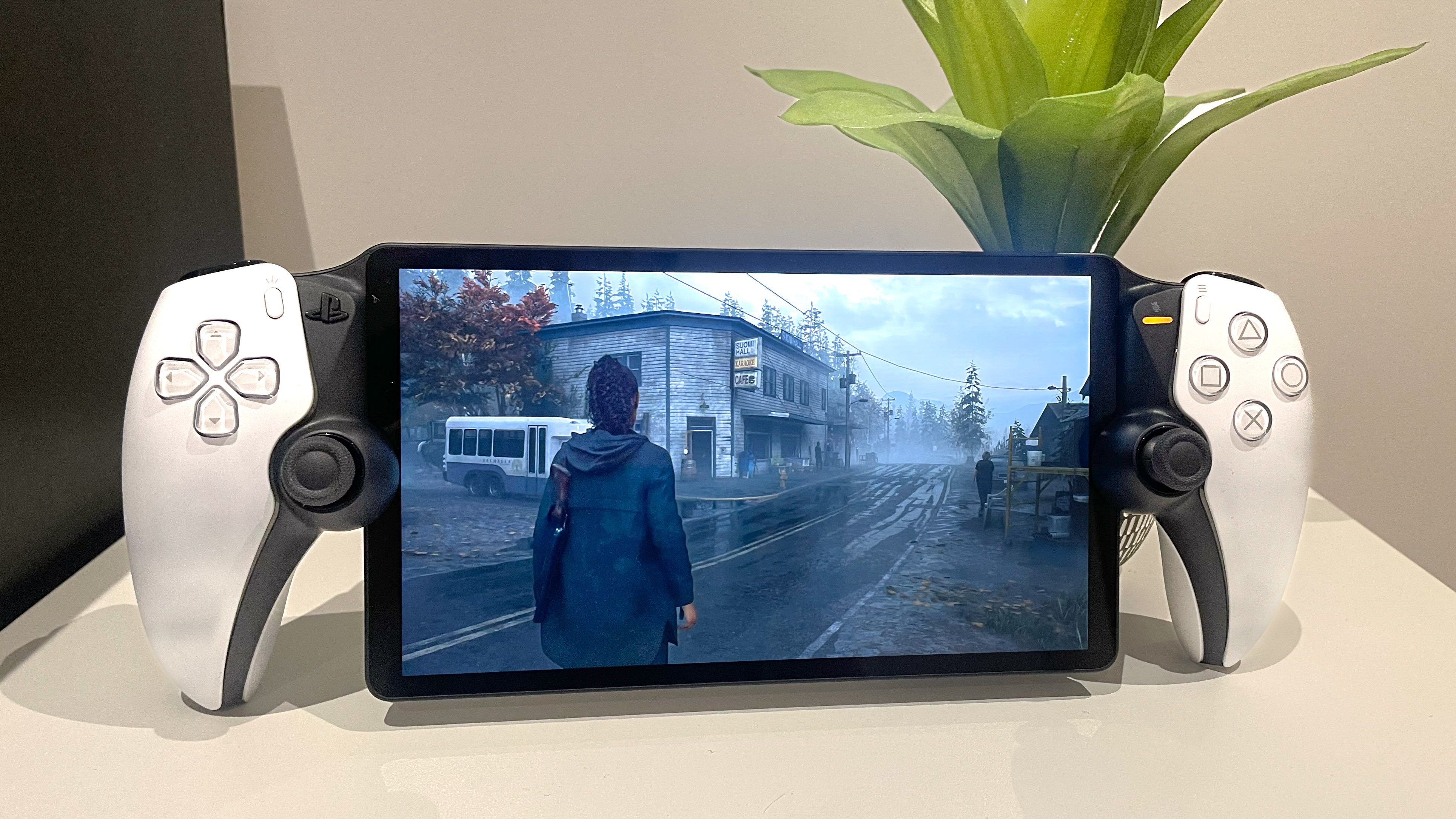
Upon reaching my destination after a blessedly smooth train journey (a rarity these days in England), the first place I decided to test the PlayStation Portal was in my hotel room.
The chain I was staying with offered free Wi-Fi, but I was highly skeptical it would meet Sony’s connection recommendations of at least 5Mbps for use, at least 15Mbps recommended. After a quick speed check, I clocked the free Wi-Fi at less than 1Mbps. As you might expect, this was not even close to strong enough for the Portal to function properly.
However, I did have the option of upgrading to “Ultimate Wi-Fi” at a cost of £5/$6 for 24 hours of access. In the name of science, I bought a voucher code and connected my iPhone 12 for a speed test. I was a little surprised that my speed only marginally increased to 9Mbps (I expected at least 15Mbps for paid Wi-Fi), but this was enough to meet Sony’s minimum threshold, so I was curious to see how the Portal would fare.
This time, the Portal was able to detect my PS5 and after an unusually long wait time for a connection to be made, my console’s home screen appeared in front of me. Huzzah, I thought, time to see if I could squeeze in a few games of EA Sports FC 24 before getting an early night. I pushed the left joystick to scroll through my game library, and nothing happened. I clicked the X button, and nothing happened. I mashed both triggers and still nothing.
The connection was strong enough for my PS5 and PS Portal to speak to one another, but clearly, it wasn’t sturdy enough for button inputs to be transmitted between them. So after a few more minutes spent testing out every single button on the device multiple times, I shut off the Portal and binge-watched a couple of episodes of Batman: The Animated Series on Netflix instead. Not a bad alternative.
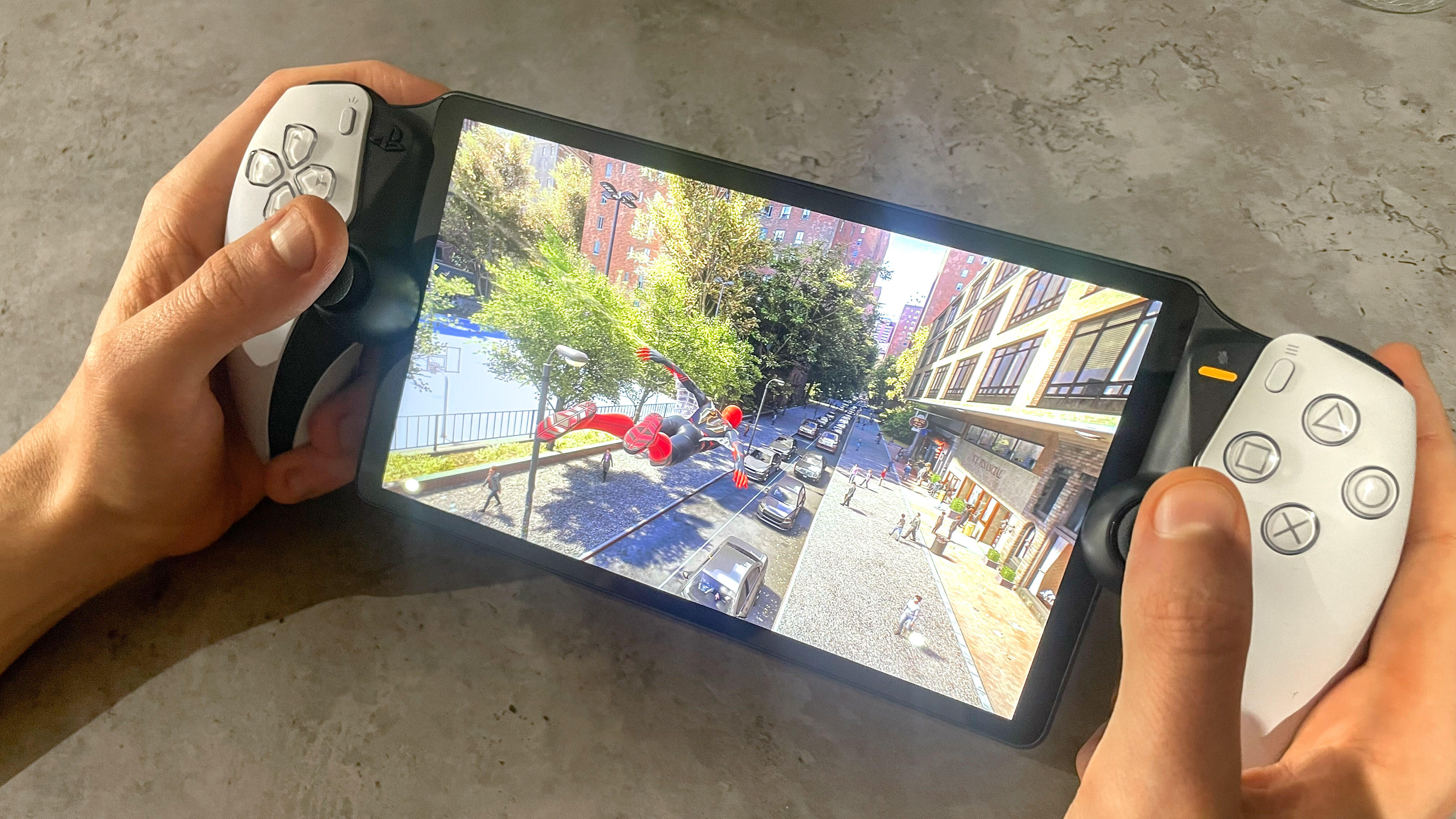
So while the dream of continuing my second Elden Ring playthrough from my hotel room located some 150 miles away from my PS5 console was dead, I wasn’t ready to admit defeat quite yet. I had a real ace up my sleeve: The uber-fast Wi-Fi connection that I’d be able to hook into once I was settled in the Tom’s Guide office.
Much to my delight, a speed check confirmed that the TG office internet greatly exceeded even Sony's upper recommendation speed. The Wi-Fi clocked in at around 80 Mbps. I booted up my PlayStation Portal confident that I was about to have a gameplay experience as smooth as the one I’d been recently enjoying from the comfort of my own sofa back at home. Then I got a connection error. And guess what? The second try yielded the same result.
I attempted to connect at least a dozen times. I subsequently disconnected and reconnected to the Wi-Fi, and restarted the Portal multiple times, yet all to no avail. I got a connection error message on the Portal's screen every single time.
Curiously, I was able to confirm via a FaceTime call with my partner that my PS5 console had remotely switched itself on, and yet my Portal resolutely refused to connect. The devices were speaking, but something was amiss.
The Portal’s biggest hurdle
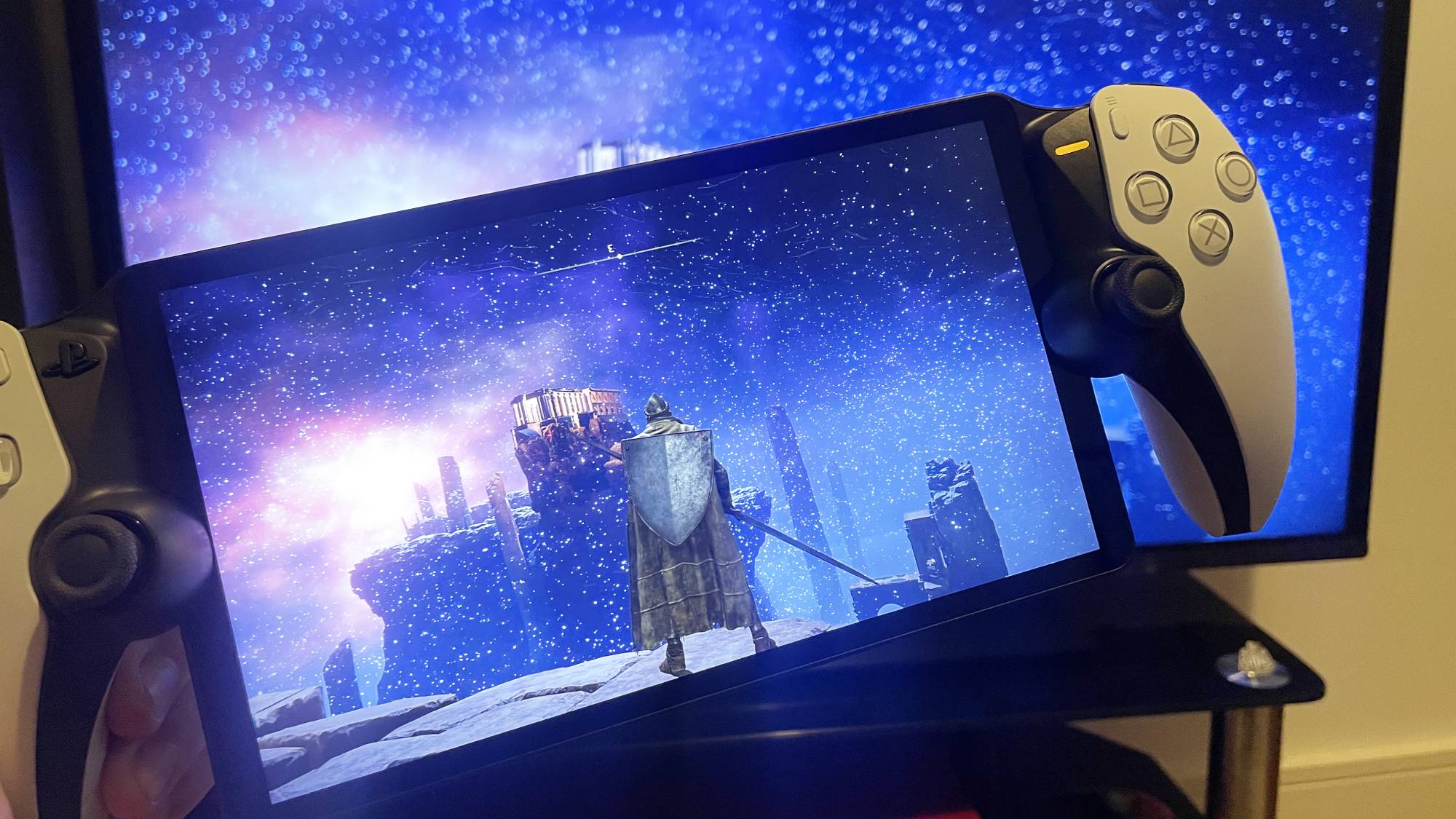
After multiple attempts to play my PlayStation Portal while on my trip — each to varying degrees of success, but none successful — I decided that playing Persona 5 Tactica on my Nintendo Switch for my trip was a much easier option during downtime. Suffice it to say, my PlayStation Portal went back into my backpack and didn't see the light of day again until I returned home a few days later.
While the PlayStation Portal isn't marketed by Sony as a travel device, this experience did highlight its biggest limitation: It’s almost impossible to know how the Portal will react to a particular Wi-Fi connection until you try it out. Based on the speeds I was able to measure, it should have functioned in the office, and yet for some reason, it didn’t (and this is a connection that is regularly used to test all manner of products, from the best Smart TVs to the best gaming laptops).
When it comes to PlayStation Portal, your mileage will vary. I’m fortunate that it works relatively flawlessly in my home (where I have an ultra-fast internet connection and close proximity to my console), but as my colleague Nick Pino found out when he reviewed the device for Tom’s Guide, that won’t be the case for everybody.
But I’m still a believer
Despite my less-than-stellar travel experience with the PlayStation Portal, I’m still hugely enthusiastic about it overall.
I’m more than happy to use it exclusively within my own home. It’s great to have the ability to chip away at some of my favorite PS5 games on the sofa while my partner is enjoying one of her numerous streaming shows that bore me to tears — sorry, Dr. Meredith Grey, your personal and professional drama just doesn’t interest me!
However, if you’re considering buying one this holiday season (if at all possible), I would strongly advise testing a friend’s unit in your own home before committing to a purchase just to make sure the connection environment is suitable enough.
Granted, buying a PlayStation Portal is pretty difficult right now but I’m tracking restocks every single day to help you secure one without having to pay an overinflated price on the resale market. And if you can't wait till it's more readily available you could always opt for a BackBone One which is a great alternative.







